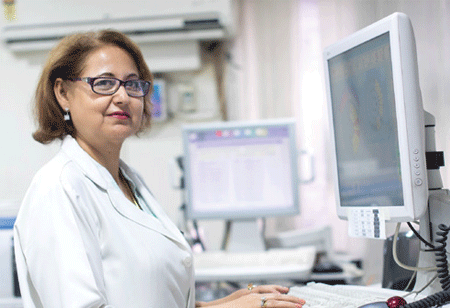
The life sciences industry is undergoing a tremendous transformation in the wake of a veritable technology revolution. Advanced technologies have greatly impacted various sectors of life sciences such as pharmaceutical, biotechnology and healthcare. Modern medical technology has accelerated the process of enabling the development of significant medical discoveries like newer drugs, enhanced diagnostics, and improved delivery of healthcare with the development of more efficient and sophisticated instruments, automation systems, software, and reagents, for protein quantification, cell biology, food safety, protein purification, gene expression, drug discovery and manufacture, and science education in life sciences applications.
There are several types of laboratory equipment ranging from glassware like reagent bottle, beaker, spectrophotometers, autoclave, microscope, centrifuges, mixers and shakers, pipette, thermal cyclers, freezers, refrigerators, universal testing machine, humidifier, incubators, bio-reactor, and even weighing scale, among many others. End users include pharmaceutical companies, biotechnology companies, diagnostic laboratories, and research institutes, among others.
Lab equipment manufacturers face a challenging scenario due to tight regulatory guidelines implemented currently and the lack of provision of adequate infrastructure. Focused efforts on the part of multiple domestic regulatory bodies to promote innovation and provide the necessary infrastructure will help elevate their image and performance. The industry’s growth is driven by the need for achieving keener accuracy in diagnosis with finer laboratory apparatus, reduced downtime, effectively meeting all quality control standards and cost-effectiveness.
The laboratory manufacturing equipment companies of India realized that their growth lay in their own performance, which had to be at par with global players, especially in the quality of their products and their efficacy vis a vis regular maintenance, recalibration and inspection of laboratory equipment. There is an increasing demand for customized and portable analytical instruments as well.
increased investment in the healthcare sector, which is primarily driven by an increasing awareness and demand for better wellness and healthcare, increasing expenditure on research and development projects in the pharmaceutical and biotechnology sectors, and the alarming rise in lifestyle diseases like diabetes, cardiovascular diseases, hypertension, and others, besides increased awareness towards preventive healthcare services, and efficient monitoring of chronic diseases like cancer and kidney disease. The government and investors are encouraging new vendors to establish high-quality labs. With more players in the market, the prices are expected to come down, which will ultimately benefit the end-users.
Laboratory equipment manufacturers the world over are implementing newer technology with the Internet of Things (IoT) and 20 laboratory apparatus to expand production and enhance their efficien
Globally, the market is expected to cross over $11 billion by 2022-end, marking a speedy growth by over 10 percent in the last five years. By 2023, it is estimated to exceed $55 billion at a CAGR of 7.2 percent. US holds the largest share in the international global life sciences and analytical instruments. Asia is estimated to be the fastest growing market, due to its pointed focus on pharmaceutical and biotech sectors, healthcare research and development initiatives and extensive clinical trials.
As India is a developing economy which has the added advantage of the availability of a large skilled workforce at low operational cost, it has emerged as the hub for global research and development initiatives. China and India are ever-growing markets with immense potential for further growth, inviting huge investment and revenue through foreign direct investment (FDI) among other funding possibilities, supported bypro-active government initiatives and policies, and encouraging investment from both public and private sectors to promote ‘Make in India’ and reduce the dependence on import of superior equipment from abroad.
Currently, lab equipment manufacturers in India follow multiple business models. It is notable that laboratory equipment manufacturers the world over are implementing newer technology with the Internet of Things (IoT) and 20 laboratory apparatus to expand production and enhance their efficiency. Self-testing kits and portable equipment like miniaturized centrifuges manufactured by Bio Rad Laboratories, Thermo Fisher Scientific and Corning have also gained importance with the development in the field of nanotechnology and miniaturization, point-of-care testing and are expected to boost growth in the global general lab equipment manufacturing market in the future.
Innovations in laboratory analytical equipment like chromatography, mass spectrometry, and thermal analysis have the potential to revolutionize the lab equipment industry, as they are highly sensitive, one- touch and light weight, lending more convenience and efficiency for research. Mass Spectroscopy is estimated to be the leading segment in terms of the industry’s growth. Tandem Quadrupole LCMS finds large-scale use in life sciences, biotech, pharma, food and academic research.
All laboratory equipment manufacturers and suppliers in India need to prudently employ all resources and materials to promote sustainable energy efficiency overall to save energy expenditure and enhance safety measures. Future growth projections in the laboratory equipment market are essentially dependent on expenditure on research and development.
It is heartening to note that India’s laboratory equipment manufacturing industry is recording rapid growth due to growing strategic alliances for
We use cookies to ensure you get the best experience on our website. Read more...